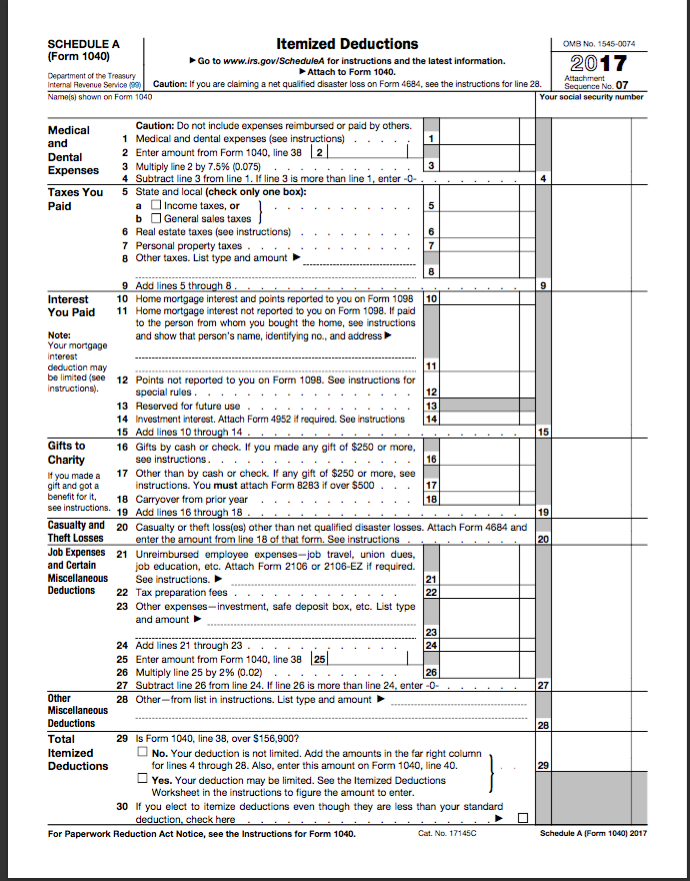

More from Smart Tax Planning: These entrepreneurs are nearly out of PPP funding. This means the deductions claimed on your return must exceed the standard deduction – which will vary in each state. Typically, unreimbursed employee expenses are an itemized deduction on state income tax returns. These employees may also be able to deduct a portion of their rent, mortgage interest and utility bills that are attributable to that space on their state tax returns, Rigney said. Those extra costs could include new computer monitors, desks and ergonomic chairs, he said. "Folks who are disappointed they won't get a federal tax benefit should go ahead and keep records, including receipts of the expenses incurred," said Rigney. Personal Loans for 670 Credit Score or Lower Personal Loans for 580 Credit Score or Lower You must fall under one of a few specific categories in order to claim this deduction, though, due to the TCJA tax changes.Best Debt Consolidation Loans for Bad Credit

For example, if you're a qualifying performing artist, you may be able to deduct the cost of costumes or other theatrical clothing that you can't wear everyday. If you have to buy clothes that you only wear for work, some individuals may be able to write off the cost. The self-employed and business owners, however, are still eligible for this deduction.

In the past, mileage accrued while driving your own car for business travel was an expense you could claim on your taxes - but the Tax Cuts and Jobs Act of 2017 eliminated that for employees. If a passport is required for your travel, you can claim that as well. Flights, hotel rooms, rental cars, meals and tips for service are all considered travel expenses, if they're business-related. If you have to commute between multiple locations or travel for work, however, some of those costs may be deductible. If you're self-employed or own your own business, regular commutes from your home to work are considered non-deductible personal expenses. This would be an alternative to calculating the various individual home expenses. Greene-Lewis says that if you take the simplified option, you can deduct $5 per square foot, up to 300 square feet, or $1,500 total. For instance, if your home is 1,800 square feet total, and your home office measures 300 square feet, your home office deductions could be applied at a rate of 16%. To find the percentage, compare the size of space you use for business to that of your entire home, and then apply the percentage to the specific expenses.

Utilities: Expenses for utilities, like electricity and gas, can be deducted - but only the percentage used in your home office.Insurance: You can deduct a percentage of your home insurance that covers the business space in your home.Some things that qualify for home office deductions: If you have a dedicated workspace at home, you can use the IRS regular method or simplified option, though you can't use a combination of them in a single tax year. Here are some of the most common deductions for folks working from home. Common tax deductions to claimīefore you start adding up all the line-items, make sure you know what's covered and what isn't. If your standard deduction is greater than the sum of your itemized deductions, save yourself the trouble and take the flat rate. You need to have sufficient proof for each itemized expense, which means tracking down receipts. If you're going to claim and itemize your work expenses, you'll need to complete Schedule A of Form 1040. It's more time-consuming than the standard deduction - and you'll need proof of the expenses you wish to deduct. Itemized deduction: If you want to claim work expenses, medical payments, charitable contributions or other expenses, you'll use the itemized deduction. Taking this route is much easier than itemizing. The rate is $25,100 for married filing jointly. For tax year 2021, the flat rate is $12,550 for single filers and those married filing separately. Standard deduction: The standard deduction is an all-encompassing flat rate, no questions asked. Claiming work expenses: First, choose a deductionīefore you start going through every line item of every receipt, you may want to save yourself the trouble and figure out which you'll take: the standard deduction or the itemized deduction.


 0 kommentar(er)
0 kommentar(er)
